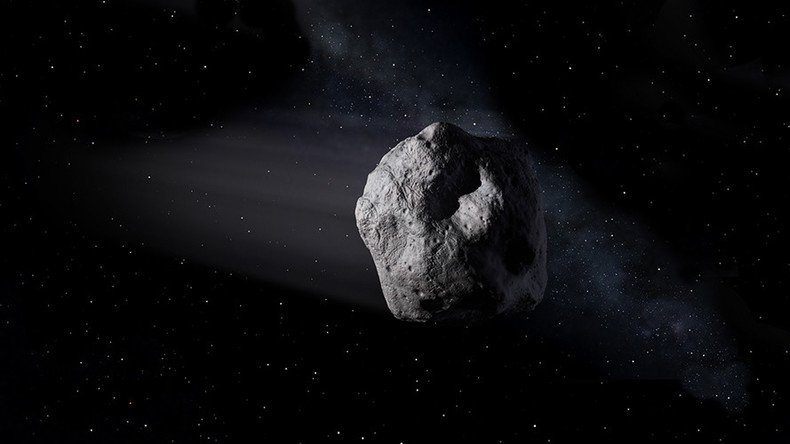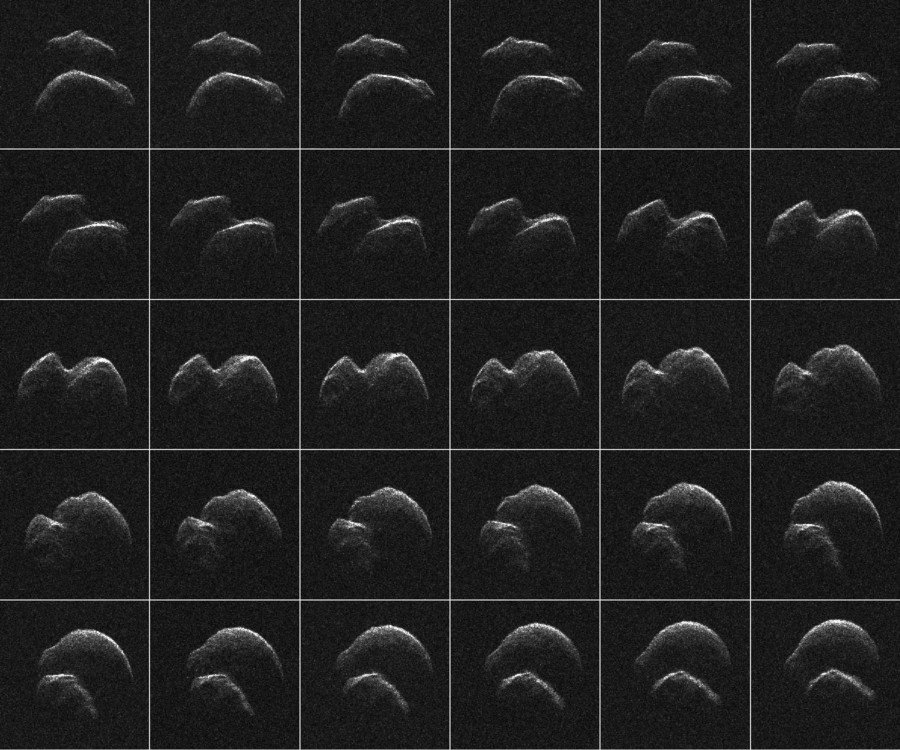Whopping 2,000ft-wide asteroid on course to hurtle past Earth (IMAGES, VIDEO)

A 2,000ft-wide (610-meter) asteroid will make a near-Earth flyby Wednesday, zooming past our planet at a safe distance of about 1.1 million miles (1.77 million km), according to NASA.
The asteroid 2014 JO25 will have its closest encounter with Earth in 400 years and will not be this near again for at least five centuries.
While the giant space rock has been labelled as “potentially hazardous,” NASA is reassuring the public that, at a distance of about 4.6 times that of Earth to the moon, there is no possibility for the asteroid to collide with our planet.
Asteroid 2014 JO25 will safely pass Earth tomorrow. We viewed it w/ radar data today, from 1.9 million miles away. https://t.co/FPICdrj26Mpic.twitter.com/5CyL35W7gz
— Asteroid Watch (@AsteroidWatch) April 19, 2017
READ MORE: Huge ‘potentially hazardous’ asteroid hurtling towards Earth
NASA has released radar images of the peanut-shaped asteroid which were obtained in the early hours of Tuesday morning by its 70-meter (230-foot) antenna at the Goldstone Deep Space Communications Complex in California.
The images reveal a ‘contact’ binary structure - two lobes connected by a neck-like region. The largest of the asteroid’s two segments is estimated to be 2,000 feet wide.

NASA says the 2014 JO25’s approach is the closest by any known asteroid of this size, or larger, since 2004.
The next known encounter of an asteroid of comparable size will occur in 2027, when the half-mile-wide (800-meter) asteroid 1999 AN10 will fly by at one lunar distance, about 236,000 miles (380,000 km).
A Very SMALL Asteroid will pass within a million miles of Earth tomorrow. Only 6 football fields wide. #HalfAsteroid
— Mark Johnson (@MarkJWeather) April 19, 2017
Asteroid 2014 JO25 was discovered by astronomers at the Catalina Sky Survey near Tucson, Arizona in May 2014.
Up to this point very little is known about its physical properties, however astronomers are preparing to use this opportunity to study it and conduct more radar observations as it whizzes by.












